1/5
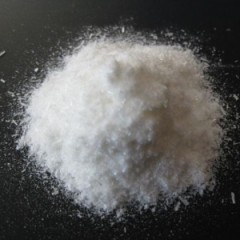



Food Grade Fumaric Acid (C4H4O4) (CAS: 110-17-8)
$0.00
- FOB Price:
- Negotiable | Get Latest Price
- Order Quantity:
- 1 Set / Sets
- Supply Ability:
- 1000 Set / Sets per Month
- Port:
- shanghai
- Payment Terms:
- T/T L/C D/P D/A Credit Card PayPal Cash Escrow Other
- Delivery Detail:
- 5 days
Hot in store
-

Top Quality Flavomycin 8% (CAS: 11015-37
Inquiry -

High Quality Feed Grade L-Threonine (C4H
Inquiry -

Amino Acids Food Grade L-Tryptophan (C11
Inquiry -
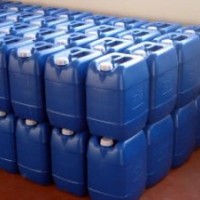
High Quality Lactic Acid 80% (C3H6O3) (C
Inquiry -
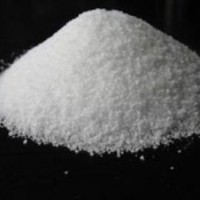
High Quality Food Grade Di-Calcium Phosp
Inquiry -
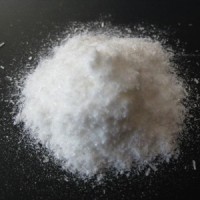
Food Grade Fumaric Acid (C4H4O4) (CAS: 1
Inquiry -
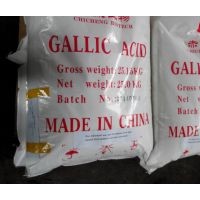
Gallic Acid (C6H2(OH)3COOH) (CAS: 149-91
Inquiry -
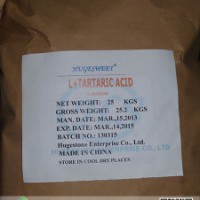
High Quality Tartaric Acid (CAS: 526-83-
Inquiry
Product Details
Food Grade Fumaric Acid (C4H4O4) (CAS: 110-17-8) C4H4O4 Inorganic Acid Liquid Tech Grade Weak Acid Inorganic Acid Tech Grade Fiber Drum Monobasic Acid Non Oxidizing Acid Volatile Acid Stabilized Acid 110-17-8 88xhz13131 C4h4o4 1.635 g/cm3 Hugestone 25kg/Bag BP/USP/EP/JP/FCC Jiangsu Product Description Fumaric acid or trans-butenedioic acid is the chemical compound with the formula HO2CCH=CHCO2H. This white crystalline compound is one of two isomeric unsaturated dicarboxylic acids, the other being maleic acid. In fumaric acid the carboxylic acid groups are trans (E) and in maleic acid they are cis (Z). Fumaric acid has a fruit-like taste. The salts and esters are known as fumarates. Dimethyl fumarate significantly reduces disability progression in multiple sclerosis.
Uses
Food
As a food additive, it is used as an acidity regulator and is denoted by the E number E297. Fumaric acid is a food acidulent used since 1946. It is generally used in beverages and baking powders for which requirements are placed on purity. It is generally used as a substitute for tartaric acid and occasionally in place of citric acid, at a rate of 1.36 g of citric acid to every 0.91 grams of fumaric acid to add sourness, similar to the way malic acid is used. It is also used as a coagulant in stovetop pudding mixes.
Medicine
In patients with relapsing-remitting multiple sclerosis, dimethyl fumarate (BG-12, Biogen) significantly reduced relapse and disability progression in a phase 3 trial. It activates the Nrf2 antioxidant response pathway, the primary cellular defense against the cytotoxic effects of oxidative stress.
Other uses
Fumaric acid is used in the manufacture of polyester resins and polyhydric alcohols and as a mordant for dyes.
Safety
Fumaric acid converts to the irritant maleic anhydride, upon partial combustion.
It is "practically non-toxic" but high doses are probably nephrotoxic after long term use.
Uses
Food
As a food additive, it is used as an acidity regulator and is denoted by the E number E297. Fumaric acid is a food acidulent used since 1946. It is generally used in beverages and baking powders for which requirements are placed on purity. It is generally used as a substitute for tartaric acid and occasionally in place of citric acid, at a rate of 1.36 g of citric acid to every 0.91 grams of fumaric acid to add sourness, similar to the way malic acid is used. It is also used as a coagulant in stovetop pudding mixes.
Medicine
In patients with relapsing-remitting multiple sclerosis, dimethyl fumarate (BG-12, Biogen) significantly reduced relapse and disability progression in a phase 3 trial. It activates the Nrf2 antioxidant response pathway, the primary cellular defense against the cytotoxic effects of oxidative stress.
Other uses
Fumaric acid is used in the manufacture of polyester resins and polyhydric alcohols and as a mordant for dyes.
Safety
Fumaric acid converts to the irritant maleic anhydride, upon partial combustion.
It is "practically non-toxic" but high doses are probably nephrotoxic after long term use.
Contact with Supplier
Recommend product
-

Stripped Soft Goose Fe
$3.00 -

plastic ball grinding
$30000.00 -

CAT piston pump 281
$4000.00 -

Droichead Zirconia Plu
$10.00 -

E.max crown, Veneer, I
Inquiry -

ReSiC Beams/plates/bur
$16.00 -

RSiC Slabs Boards Tile
$15.00 -

RSiC Batts as Kiln she
$15.00 -

RSiC Tube by recrystal
$10.00 -

RSiC Kiln Furniture (B
$16.00 -

RSiC Burner Nozzle Fla
$18.00 -

RSiC Beam Support Pill
$16.00 -

RSiC plate Slab Board
$15.00 -

NSiC Tube Pipes by Nit
Inquiry -

used excavator hudraul
$16600.00 -

NSiC Thermocouple Prot
Inquiry -

Stalk Riser Tube for L
Inquiry -

NSiC Ceramic Heater Pr
Inquiry -

RSiC NSiC Ceramic Kiln
Inquiry -

used excavator hudraul
$11500.00
Product parameters
closure
This shop is operated by agent
- Set up shop
- Authorized by Manufacturers & Suppliers online marketplace B2B platform GongWong.com, can provide agency service
- Service Introduction
- Authorized product, Internet cloud promotion service integrating certification promotion and procurement inquiry
- Intelligent website construction
- PC terminal + mobile terminal, create a cost-effective corporate website!
closure